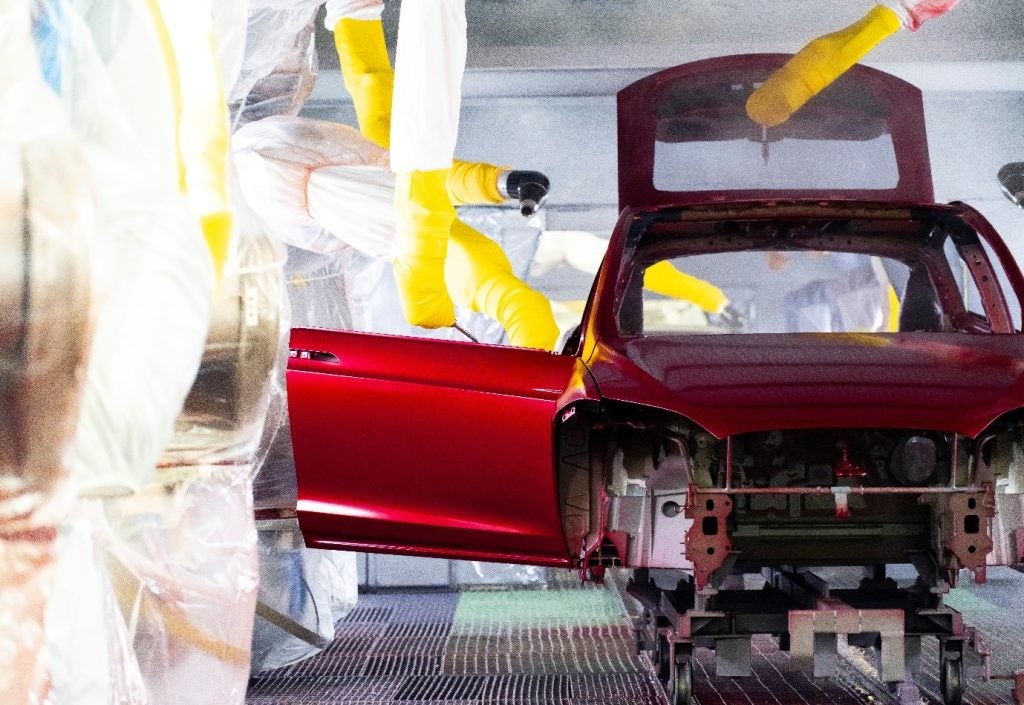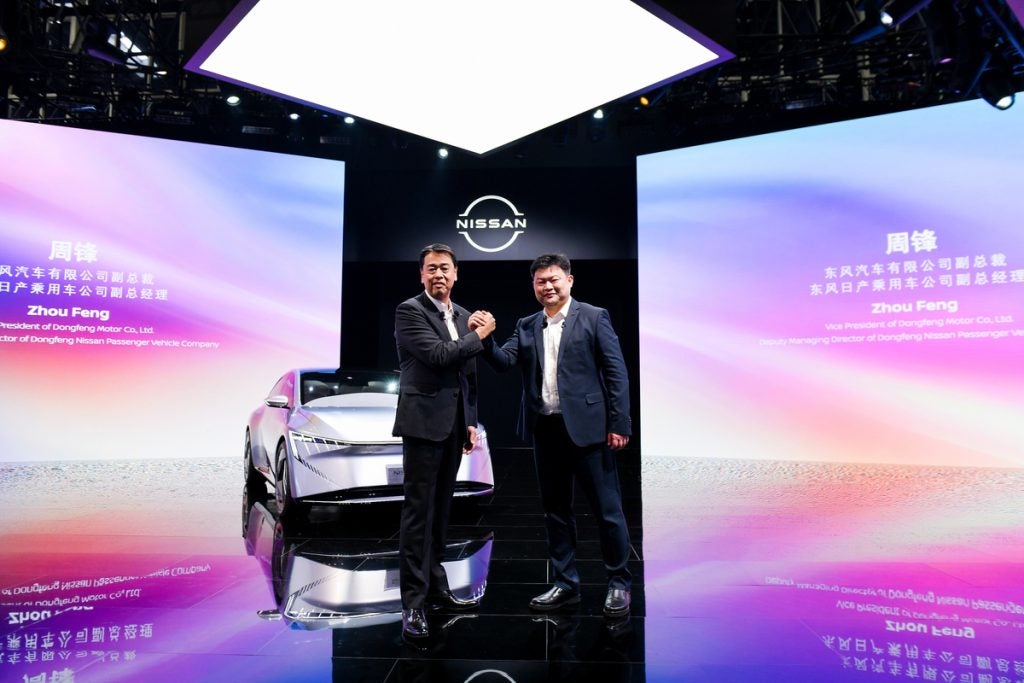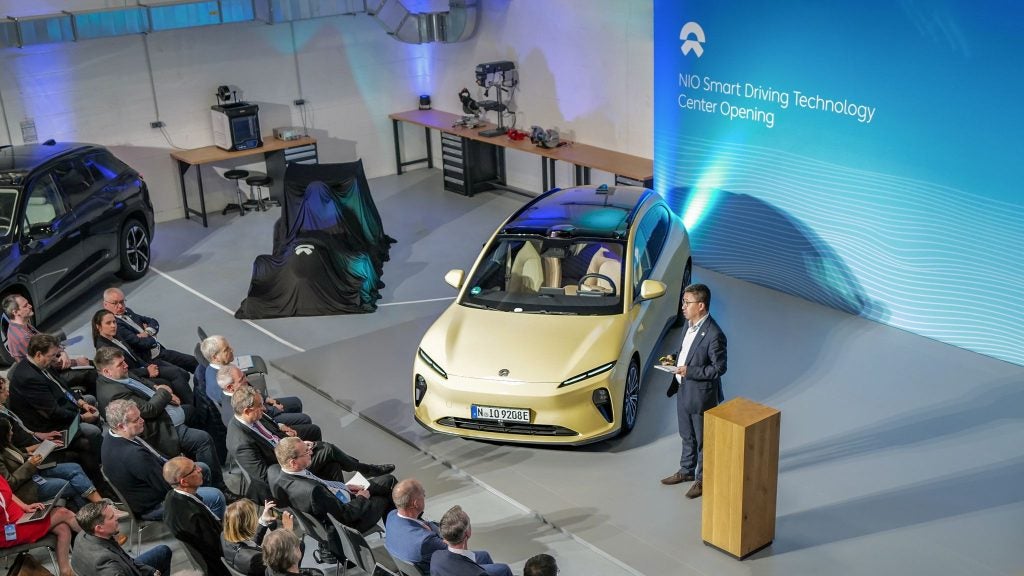 Originally introduced to feed a niche market, the Kei Jidosha, or minicar – classified a vehicle with an engine capacity not exceeding 660cc – now accounts for more than 30 percent of annual passenger vehicle sales in Japan. AWKnowledge reports.
Originally introduced to feed a niche market, the Kei Jidosha, or minicar – classified a vehicle with an engine capacity not exceeding 660cc – now accounts for more than 30 percent of annual passenger vehicle sales in Japan. AWKnowledge reports.
Revision of government regulations covering size and safety specifications of minicars in 1998, a host of new models and aggressive marketing by vehicle manufacturers have combined with an increasing number of female and elderly drivers and a stagnating economy to make the minivehicle segment one of the few to post steady sales growth.
Sales of passenger cars priced at more than Yen 2.5m (US$20,800) have fallen from over 38 percent of total car sales to just 25 percent in the past decade, while those in the Yen 1.5m. – Yen 2.5m (US$12,118 – US$20,800) bracket, which includes MPVs, the main demand drivers of the latter 1990s, have fallen to around 30 percent from 35 percent. Meanwhile, the market share of cars costing less than Yen 1.5m (US$12,118) has risen in the past ten years from 26.9 percent to almost 44 percent.
As Japan’s economic doldrums have driven consumers towards cheaper cars, minivehicles have reaped much of the benefit. Much of their success has been a lucky side-effect of an overhaul of safety regulations by the government in 1998, which brought minivehicles into line with regular vehicles in terms of what impact they must be able to withstand in an accident. This forced manufacturers to redesign the vehicles to make them wider and longer, and sales quickly shot up.
Minivehicle sales accounted for only 24 percent of the market in 1997, but that had risen to 32 percent by 1999. Prior to the law change, minicars were never really viewed as direct substitutes for non-minivehicles. However, the fact that they became larger and safer suddenly made them more of a viable option for people who were shopping for a small car. Demand has also been stimulated by lower registration fees and taxes on minicars, which are often used for travelling short distances in rural areas where bus and train services are lacking, than on regular vehicles. Loose rules on parking in rural areas have also helped.
How well do you really know your competitors?
Access the most comprehensive Company Profiles on the market, powered by GlobalData. Save hours of research. Gain competitive edge.

Thank you!
Your download email will arrive shortly
Not ready to buy yet? Download a free sample
We are confident about the unique quality of our Company Profiles. However, we want you to make the most beneficial decision for your business, so we offer a free sample that you can download by submitting the below form
By GlobalData |
The new Daihatsu Move: a radical box for the mobile age |
Suzuki and Daihatsu have traditionally dominated the minicar market, although stiff competition from rivals such as Honda and Mitsubishi have seen their market share slowly erode in the past few years. Nevertheless, in the first half of the current fiscal year (April-September), Suzuki’s share of the minicar market stood at over 30 percent, followed by Daihatsu, with a 25 percent share. Honda had a 16 percent share, Mitsubishi, 13 percent, Subaru around 8.6 percent, and Mazda, 2.5 percent. Nissan, meanwhile, has already captured a 3.1 percent slice of the market in spite of only entering it for the first time in April with the launch of its Moco minicar. However, both the Moco and Mazda’s range of minivehicles are manufactured by Suzuki on an OEM basis.
The strength of the mincar market shows the success manufacturers have had in dispelling the image of such vehicles as cheap, but basically unreliable, uncomfortable and unsafe. The segment has continued to be underpinned by the launch at the end of last year of a host of new concept cars. Suzuki’s top-selling Wagon R model and other wagon models had a cumulative market share exceeding 40 percent after the introduction of new specifications in October 1998. However, their market share fell after Mitsubishi launched its eK Wagon in October 2001, and new concept models have since captured more than 25 percent of the market.
New concept models have three main attributes:
- Designs based on long-selling wagon models (Mitsubishi’s eK Wagon and Daihatsu’s Max)
- A lower height enabling them to fit into multistory car parks lots and giving them greater convenience than wagon models (excluding Suzuki’s MR Wagon and Nissan’s Moco)
- Longer cabin interiors providing them with better utility than sedan minivehicles
Moreover, demand is likely to remain strong with the introduction of a second generation of new concept cars. Daihatsu introduced a fully revamped version of its core Move wagon model this October, and Suzuki’s Wagon R, Honda’s Life, and other vehicles are slated for model changes in 2003 and beyond.
Daihatsu announced a bumper-to-bumper remodelling of its mainstay Move wagon-type minivehicle on 15 October. Introduced in September 1995, the Move was the second wagon-type minivehicle to hit the market, following Suzuki’s Wagon R. The company has sold 1,169,655 of the vehicles, and wagon models have made a significant contribution to stimulating new demand. The upcoming remodelling will result in the third-generation Move, following the last updating after new regulatory standards were introduced in October 1998.
Daihatsu’s new minivehicles come in two versions: the Move, which was built on the concept of ‘an exciting minivan that revolutionises people’s lifestyles,’ and the Move Custom, which is designed to be a ‘radical box for the mobile age.’ The cars are defined by the following seven attributes:
- High-quality designs
- Spacious and comfortable cabins
- Utility for drivers of all ages
- Top-level safety performance for a small car
- Clean-running vehicles rated ELEV or ULEV
- Compliance with new fuel-efficiency rates for FY10
- Affordable prices
The feel of the interior has been upgraded significantly, with all switches illuminated, and cabin space has been increased (from 1,730mm x 1,220mm to 1,920mm x 1,300mm) by using a more compact layout for the engine housing and adopting a new platform with thinner doors and an extended wheel base. Utility has also been enhanced sharply, with the following features:
- Luggage space can be expanded in a single motion (standard on all but the low-end L versions)
- Doors that open up to 90 degrees
- Multifunction DVD car navigation system (the first for a minivehicle; factory option)
- Seat lifters, tilt steering, and adjustable seat belt anchors (standard on some versions)
Safety features include the following:
- Enhanced safety in collisions through a new ribbed-construction frame (tested in car-on-car collisions and using high-tension materials), designed to disperse the impact of a collision
- Six airbags (a minivehicle first; factory option on some versions)
- The Daihatsu Vehicle Stability control system II (a first for a 4WD minivehicle; factory option on some versions)
- A ‘blind corner’ monitor (another minivehicle first, with a multifunction DVD car
- navigation system available as a factory option in some versions)
- Radar cruise control (a minivehicle first, factory option on some versions)
The new Move clears new government-mandated mileage standards applicable to all vehicles from 2010 and qualifies for green tax breaks (the front engine/front-wheel drive versions have been certified as U-LEVs, the 4WD and other versions as E-LEVs). The twin-cam DVVT engine mounted in the front engine/front-wheel drive versions features the world’s first intelligent catalyst (that regenerates its precious metals for a longer service life), and has been approved for government use based on green procurement guidelines.
In short, the merchandising strength behind the new Move has been significantly enhanced, and prices have been set about Yen 50,000 (US$404) below prices for earlier models of the Move. Moreover, although prices are slightly higher than comparable rival models such as Suzuki’s Wagon R and Honda’s Life, this reflects its edge in terms of base product strength; prices for turbo versions are higher, but the Wagon R and Life are only available with three-cylinder engines, while the Move’s line-up includes three-and four-cylinder versions; the Life mounts a three-speed automatic transmission while the Move features a four-speed automatic transmission.
Monthly sales of the last version averaged 14,120 vehicles, and the company is targeting a relatively modest 13,000 units a month after remodelling (5,000 Moves and 8,000 Move Customs). Move sales volumes have been declining since the November 2001 launch of the new-model Max, which provided a new design concept in wagon models. During the first half of fiscal 2002, the average monthly sales volume of the Move was 10,598 vehicles.
 |
Nissan Moco is manufactured by Suzuki on an OEM basis |
Although Daihatsu successfully boosted its market share by broadening its line-up after regulatory revisions in October 1998, the company has since been striving to increase its product strength with a number of higher-quality, higher-priced models. As a result, its price competitiveness has deteriorated and since FY01 its share has started to shrink again. “The company therefore cannot afford a flop with the remodelled Move, which also appears to be a very important vehicle in terms of the overall demand trend in the minivehicle market. In our opinion, the crucial points are pricing and product strength”, notes Nikko Salomon Smith Barney.
That said, given that competing models are nearing the end of their model lifecycles and the gap between the Move and its peers in terms of cabin room and other aspects of product strength, the new model is competitively priced and as a result sales should outpace the company’s target of 13,000 units a month by a wide margin.
However, Daihatsu cannot afford to rest on its laurels. The launch of the new Move will spark further intensification to increase product strength in the minivehicle market while keeping prices down. With the first-strike launch of a mainstay model, the key for Daihatsu will be the extent to which it can use its lead-time to leverage its product strength and differentiate itself from peers.
In the first half of fiscal 2002, unit sales of these new models (Mitsubishi’s eK Wagon, Daihatsu’s Max, and Suzuki’s MR Wagon and Alto Lapin) increased, underpinning market demand. Market share for new models, which stood at just four percent in September 2001, rose to 25.7 percent in September 2002. The fact that demand itself was largely flat during the period suggests that new concept models stole share from older models in registering higher sales. In the first six months of fiscal 2002, minivehicle unit sales increased for the second consecutive six-month period, climbing 2.9 percent year-on-year to 891,607 vehicles.
On the other hand, since vehicle manufacturers have expanded their line-ups in the overall minivehicle market, sales per model are declining. Nikko Salomon Smith Barney notes that minivehicle manufacturers that have enjoyed sales volume growth face risks because expanded product line-ups could 1) reduce their sales volumes and 2) boost their product development and sales costs.
The simple fact is that competition in the minivehicle segment of the market has become increasingly stiff and warning signs are flashing for a number of manufacturers. Daihatsu, for example, saw its sales fall by over six percent in the first half of fiscal 2002, while Mitsubishi has seen unit sales steadily drop for all its models of minivehicles with the exception of the eK Wagon.
However, perhaps the most vulnerable is Fuji Heavy, which has not launched any new models. Unit sales of its Subaru-branded minivehicles have declined steeply, dragging down its market share to 8.2 percent. In the first half of fiscal 2002, sales totaled 73,153 units, down 14.3 percent year-on-year. Sales in the previous half dropped by 12.6 percent, and the company is now set to see sales fall for the third year in a row. In addition, Fuji Heavy does not have plans for new models, and analysts expect the sales slide to persist, given that rivals continue launching new models and ramping up competition.
Fuji Heavy is attempting to increase parts sharing and other cooperation with Suzuki as a member of the GM group, but detrimental effects from worsening market conditions are offsetting benefits from these efforts. Nikko Salomon Smith Barney warns that if unit sales decline more rapidly, management could be forced to overhaul its minivehicle business.
Ironically, two market players generally considered safe are Mazda and Nissan, who between them control only around 5.6 percent of the market. This is because their range of minivehicles are manufactured on an OEM basis by Suzuki, which means that they don’t have any production costs to bear. It also allows them to pull out at little cost if sales no longer justify their presence in the market. In the meantime, Nissan’s fresh presence in the market is viewed as a minor threat to established players and will contribute to growth in minivehicle demand. Moreover, sales for the two new players should translate into greater earnings for Suzuki.
However, Nikko Salomon Smith Barney warns that that the coming year will be a crucial one for the minivehicle sector. “With Suzuki’s Wagon R, Honda’s Life, and other vehicles slated for model changes in 2003 and beyond, we want to ascertain whether the launch of new concept models and full-model changes for wagon models ahead will generate higher demand as expected or whether they will cannibalise other vehicles and spark further competition, as is the case today”.
 |
click on the table to enlarge |
By Andrew Mollet.
To learn more about this and other world vehicle markets, and download your free sample of AWKnowledge’s “World Vehicle Markets Analyst” newsletter, please click here.







